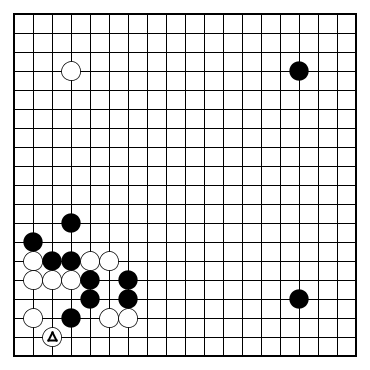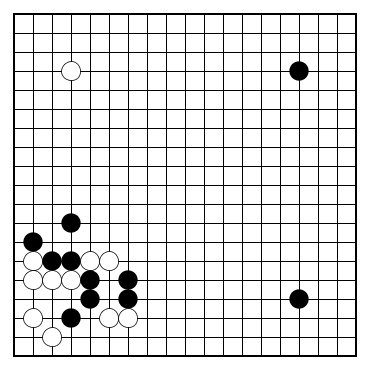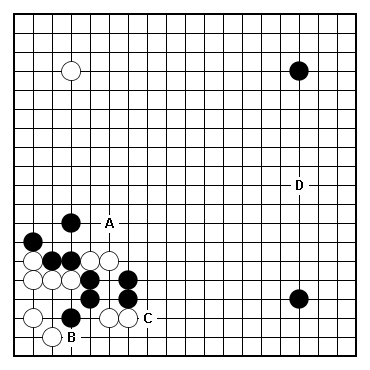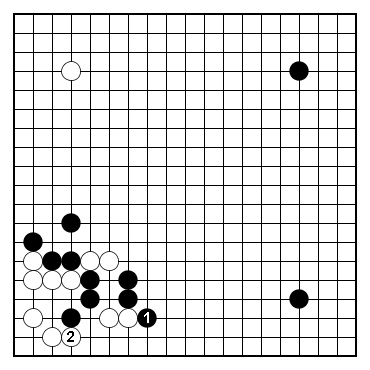Direction of Play... and Bad Habits (2)
White has just played the triangle-marked move in the lower left. Imagine you are black in dia 1 - where do you play next?
 Dia 1
Dia 1
Same problem, this time just ignore what the last move was. You are black in dia 2- where do you play next?
 Dia 2
Dia 2
Same problem, let's simplify a bit: black to play in dia 3, choose from A to D.
 Dia 3
Dia 3
Black 1 in dia 4 is natural: white tries to connect, black has to cut, that's the only manly move, right?
Wrong. Let's see what is the result of black cutting: the white group in the lower left corner is already alive, so nothing there. Black doesn't make any extra eyes or territory - nothing there. White's 2 stones on the lower side get separated, and have to live independently - black might profit from chasing them - finally, something interesting. But once black cuts, he loses sente, so it is White's turn and he can extend at 2, which erases Black's potential on the lower side. And Black's group on the lower side is also weak. Black has no reasons to be happy with his cut.
Let's try to think of something else for black to play.
 Dia 4
Dia 4
Black 1 in dia 5 is taking the opposite approach: it is forcing white to connect his groups. This is the right answer in this case. Go is not about cutting stones randomly - it is about territory. Ideally, we want to build territory (or at least areas of influence) in sente. That's exactly what black 1 in dia 5 does. White gets about 5 points or so as he connects on the second line, but look at Black's moyo on the lower side, and at how Black's group got stronger compared to dia 4, and at how black is sente. Black 1 here became a wonderful forcing move.
 Dia 5
Dia 5
Conclusion
- Don't follow the opponent's last move. Make sure you understand the implications of that last move, and reassess your judgement of the position, but once you did that all stones are equal - the best move can be anywhere on the board. Go find it!
- Find where the big potential areas are - either yours, or your opponent's - and start thinking from there. Find the weak groups, and find any possible double-meaning moves: attack-and-build, or attack-and-reduce...
- Think of a purpose for each move you plan to play in terms of (potential) profit, not just attacking.
Further study
- The Direction of Play
by Kajiwara Takeo
- Chapter 5 ("Territory and Spheres of Influence"), Dia 23 (how to attack the white group on the middle of the right side) from Lessons in the Fundamentals of Go
by Toshiro Kageyama
